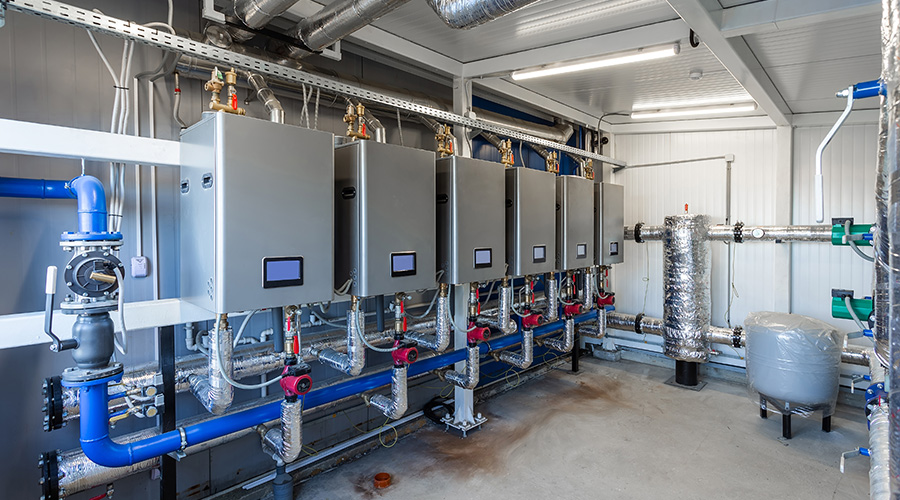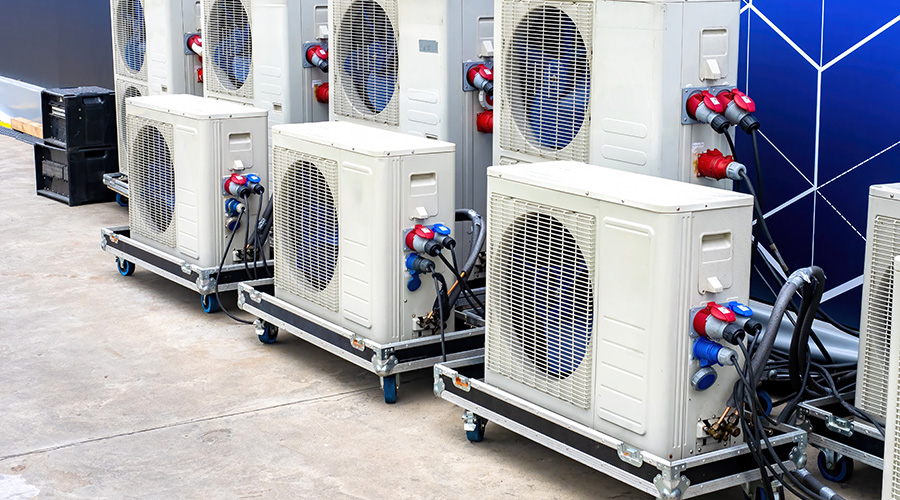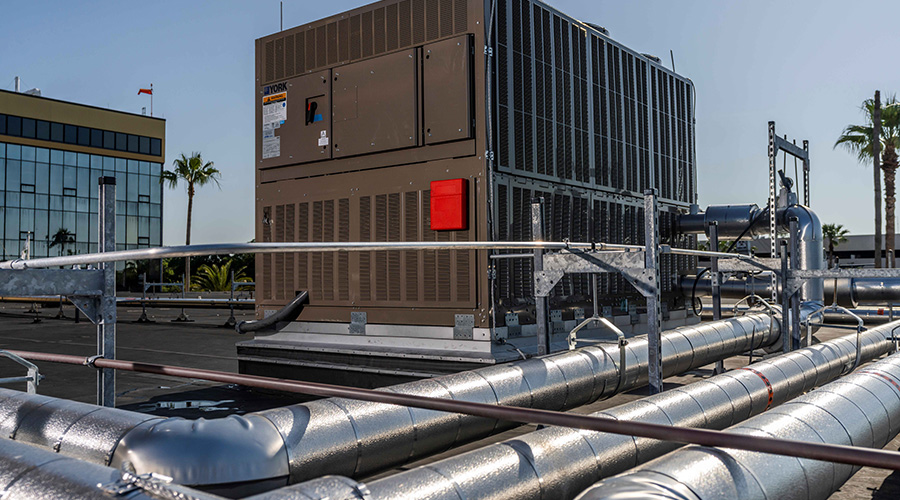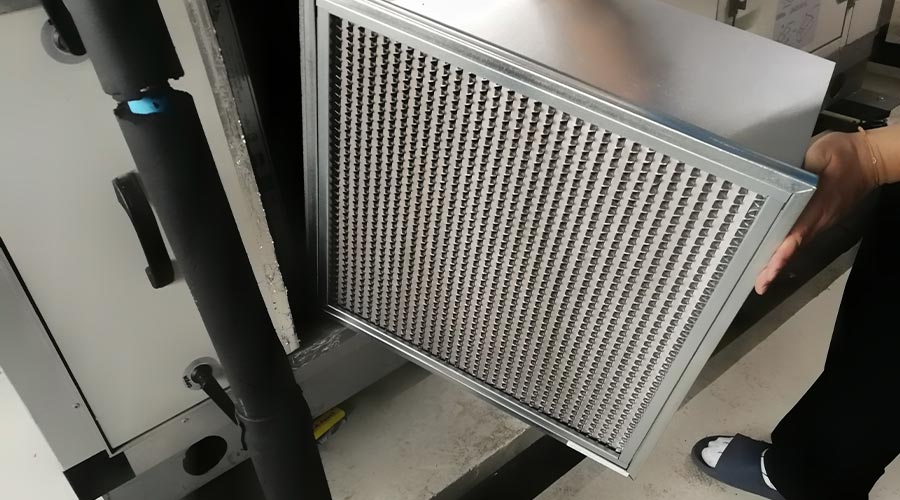The Next Phase in Refrigerants
Deadlines for phaseouts, teamed with decisions on big-ticket equipment, can mean difficult choices for managers
The primary factor driving refrigerant regulations today is stratospheric ozone depletion. Approved in 1987, the Montreal Protocol regulates the production and use of chemicals found to contribute to the depletion of the earth’s ozone layer.
What does reduced ozone mean for maintenance and engineering managers and their organizations’ refrigerant needs? Until recently, most refrigerants used by chillers and other cooling equipment fell into the category of ozone-depleting substances.
Today, managers have many refrigerant options that can help minimize negative effects on the ozone layer. But the relationship of these options to current market trends is not always clear.
By understanding where regulations started, as well as current market trends, managers can take steps to prepare for imminent changes in refrigerant availability, including having an incremental chiller replacement or retrofit plan to avoid costly equipment changes in the next decade.
Chemical Considerations
Only a few chemicals can be used effectively as refrigerants, and the pressure-temperature relationships of a particular substance make its use more or less attractive. Most refrigerants used in air conditioning and refrigeration equipment are exclusively halocarbons — hydrocarbons containing one or more halogens. Among leading refrigerants, the halogen is chlorine or fluorine.
The main refrigerant types on the market are chlorofluorocarbons (CFCs), hydrochlorofluorocarbons (HCFCs), and hydrofluorocarbons (HFCs).
Some of these refrigerants have particularly long atmospheric lifetimes — the amount of time a chemical molecule remains in the atmosphere and can effectively break down an ozone molecule. Refrigerants are compared by a value called ozone depletion potential (ODP).
ODP is calculated for each refrigerant and compared to CFC-11, a chlorofluorocarbon with a high relative ODP value of 1.0 that serves as the baseline value. The smaller the ODP value, the lower the potential that refrigerant has for ozone depletion.
A primary objective of the Montreal Protocol is to cap production of refrigerants based on ODP values. All CFCs, including CFC-11 and R-12, were phased out of production on Jan. 1, 1996, and no longer are available for new equipment. Replacement CFC refrigerants are available only from stockpiles accumulated before the above date or if recovered from existing equipment.
The HVACR industry successfully transitioned away from the refrigerants most harmful to the ozone layer. Manufacturers now use HCFCs such as R-22 and R-123, as well as HFCs such as R-134a, R-410a and R-407c. HCFCs, defined as transitional refrigerants only, are scheduled to be phased out of production. No phaseout dates are planned for any HFCs, which have an ODP value of 0.0.
HCFC refrigerants are transitional, and beginning in 1996, their use was capped at a percentage of historic use on an ozone-depletion-weighted basis. The cap will decrease incrementally until worldwide production is eliminated in 2030.
This particular cap affects several individual HCFCs. Each has a separate phaseout schedule from the U.S. Environmental Protection Agency (EPA) based on its ODP value. The higher a refrigerant’s ODP, the faster its phaseout will occur.
The cap schedule is well under way, and much of the incremental reduction of HCFCs to this point have been refrigerants used for applications other than HVACR, not the main transitional refrigerants, such as R-22 and R-123. The next major reduction, in 2010, will eliminate R-22 as an acceptable refrigerant in new equipment.
Soon, managers will be left with these acceptable refrigerants for new-equipment purchases:
• R-123, an HCFC with a scheduled phaseout date of 2020 in new equipment. It is only used in centrifugal chillers and only provided by one major manufacturer.
• R-134a, an HFC with no scheduled phaseout date. Provided in equipment by all major manufacturers, it is used in centrifugal chillers, water-cooled screw chillers, and air-cooled positive-displacement chillers.
• R-410a, an HFC with no scheduled phaseout date. Provided in equipment by most major manufacturers, it is used in smaller air-cooled positive-displacement chillers, packaged rooftop equipment, and residential equipment.
• R-407c, an HFC with no scheduled phaseout date. Provided in equipment by some major manufacturers, it is used in smaller air-cooled positive displacement chillers and packaged rooftop equipment.

Market Trends
The Montreal Protocol and its application under EPA’s Clean Air Act have been widely viewed as successful in decreasing the use of ozone-depleting substances. The incremental phaseout of HCFCs allowed manufacturers to quickly get away from the most harmful CFCs while allowing time for manufacturers to develop refrigerants that could produce few if any environmental problems.
HCFCs have performed well, but their useful lives soon will come to a close. In fact, according to the EPA’s web site, “On March 14, 2007, the United States submitted a proposal to adjust the Montreal Protocol to accelerate the phase-out of ozone-damaging chemicals.” The EPA listed the four main points of this proposal:
• accelerate the phaseout of HCFCs by 10 years
• add interim reduction steps
• set an earlier baseline
• phase out the most damaging HCFCs to the ozone layers as the first priority.
Though other HCFCs are in the mix, this policy proposal raises questions about the availability of R-123 in coming years. Since R-123 has been used in only one type of equipment — centrifugal chillers — and historically has been produced by two manufacturers — and only one manufacturer currently — the certain availability of this refrigerant in the near future comes into question.
The same is not true for R-22. Since most manufacturers have used it in many types of equipment for years, managers should have no real worries about future shortages while implementing strategies toward new refrigerant solutions.
Ideas for Action
Considering the 25-30-year performance life of centrifugal chillers, a wait-and-see approach could leave equipment owners struggling to make necessary changes. Government-mandated change-outs could occur as they have in the past, or managers might have trouble finding refrigerant replacement supplies for aging equipment.
One manufacturer of large tonnage chillers says evaluating current and future equipment needs is a business decision driven by environmental concerns.
“As a company, we can no longer suggest owners purchase equipment utilizing R-123, since it could easily outlive the phaseout period of that refrigerant,” he says. “Owners should evaluate the availability of refrigerants in the future before making a large expenditure for their central plants.”
Regularly checking equipment efficiency will help managers catch equipment leaks and eliminate the need to buy more refrigerant for existing equipment.
This refrigerant management issue has confused many in facilities and in the air conditioning and refrigeration industry for some time, though answers are becoming clearer. As the phaseout of HCFCs nears and leaves managers with only HFCs to choose from, some of the guesswork and confusion associated with equipment procurement will disappear.
The question no longer centers on which refrigerant to use but when to implement plans to move to long-term refrigerants without scheduled phaseout dates. The sooner managers begin planning and implementing that plan, the better off they will be when availability of any particular refrigerant becomes uncertain.
The Montreal Protocol is seen as the first successful broad-based international environmental policy initiative, and it continues to work today. Managers need to understand its implications for businesses and equipment needs. Nothing less than proper planning will help reduce the costs associated with the inevitable changes in the world of refrigerants.
Managers who educate themselves now and begin implementing refrigerant management plans will be able to enjoy the fact that they have potentially saved the budget a significant amount of money, while also contributing to a healthier planet.
James D. Qualk, LEED AP, is director of LEED facilitation sales for SSRCx — www.ssrcx.com — the commissioning subsidiary of Smith Seckman Reid, a leading engineering design and facility consulting firm. SSRCx verifies that buildings and their systems are designed and installed in a quality manner and meet the needs of the owner and its occupants, and recently established the Sustainable Solutions Group to assist building owners and managers in achieving LEED certification.
Spotlight: ARI
The Air-Conditioning and Refrigeration Institute (ARI) is the trade association representing manufacturers of more than 90 percent of the air conditioning and commercial refrigeration equipment installed in North America. Headquartered in Arlington, Virginia, the association is an internationally recognized leader in developing standards for and certifying the performance of these products.
Operating with a vision of being the premier trade association enhancing the North American air conditioning and refrigeration industry’s world leadership position, ARI promotes the viability and growth of the heating, ventilation, air conditioning, and refrigeration HVACR industry both domestically and globally for its more than 200 members through standards, certification, and advocacy.
For more information on ARI’s resources and activities, visit www.ari.org.
|
Bill Targets Cooling-Equipment Depreciation
Congress again is debating legislation that would amend the U.S. tax code to reduce the depreciation period for commercial cooling systems — large-tonnage liquid chillers to commercial air conditioners and heat pumps.
Under the proposed Cool and Efficient Buildings Act (H.R. 1888), reintroduced by Rep. Peter Hoekstra (R-MI), the depreciation period would shorten from the current 39-year period to a more realistic 20 years. A range of commercial buildings, from shopping malls to hospitals, would qualify for the new depreciation rate.
“Our industry has made great strides in improving the efficiency of cooling and refrigeration systems to help the nation, and the world, reduce energy consumption and lessen the environmental impact of this equipment,” says Stephen Yurek, president of the Air-Conditioning and Refrigeration Institute (ARI). “Unfortunately, the replacement of older, inefficient cooling systems that use ozone-depleting refrigerants has been slower than expected, partly due to the tax code.”
The legislation aims to spur the replacement of more than 35,000 chillers still operating in North America that use ozone-depleting chlorofluorocarbon refrigerants. Newer equipment is 40 percent more efficient and uses refrigerants that are less detrimental to the ozone.
“We are confident that the combination of a new depreciation schedule and escalating energy costs will prompt business owners to purchase newer, more efficient cooling systems,” Yurek says.
Replacing inefficient commercial cooling equipment will save 137 trillion BTUs a year by 2015, according to an analysis commissioned by ARI.
— By Francis J. Dietz, senior director of public affairs for the Air-Conditioning and Refrigeration Institute.
|
Related Topics:












